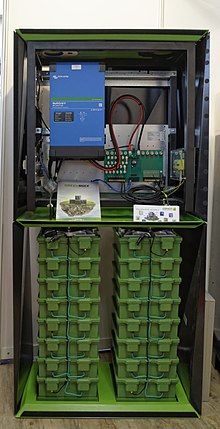Is anyone using Sodium batteries together with a SmartSolar.
I have both a SmartSolar 100/15 on and a SmartSolar 100/30 (they are on different vehicles) and in both of them the lead-acid battery is getting bad.
Instead of replacing them with LiFePo, as is common nowadays, I am considering Sodium (Na-Ion) batteries. They charge the same CC+CV curve as LFP, or so I am told, but with different voltages, and I noticed I can set those voltages in the Smart Solar devices.
(well, nearly all of them, Sodium can discharge to well below 10V without problem, but 10V seems the lowest I can set)
Anyone is already doing this? Any experiences?
PS: yes, I am aware of the problem with engine Generators/Dynamo's and Lithium high current and sudden BMS shut down. Is not my primary question, though I am open for experiences in that too.

 Found this on Wickipedia...
Found this on Wickipedia...